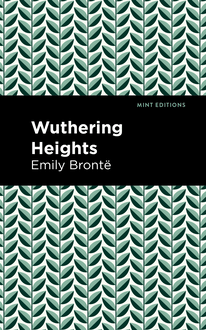-
 Univers
Univers
-
 Ebooks
Ebooks
-
 Livres audio
Livres audio
-
 Presse
Presse
-
 Podcasts
Podcasts
-
 BD
BD
-
 Documents
Documents
-
- Cours
- Révisions
- Ressources pédagogiques
- Sciences de l’éducation
- Manuels scolaires
- Langues
- Travaux de classe
- Annales de BEP
- Etudes supérieures
- Maternelle et primaire
- Fiches de lecture
- Orientation scolaire
- Méthodologie
- Corrigés de devoir
- Annales d’examens et concours
- Annales du bac
- Annales du brevet
- Rapports de stage
La lecture à portée de main
Vous pourrez modifier la taille du texte de cet ouvrage
Découvre YouScribe en t'inscrivant gratuitement
Je m'inscrisDécouvre YouScribe en t'inscrivant gratuitement
Je m'inscrisEn savoir plus
Vous pourrez modifier la taille du texte de cet ouvrage
En savoir plus

Description
Set in a coastal English town during the early phases of the Napoleonic Wars in the 1790s, Sylvia’s Lovers follows the complicated love life of a young woman. Sylvia Robson lives a very happy life with her parents on a farm. Her cousin, a kind but dull Quaker man named Philip, loves her dearly, but Sylvia’s heart is captured by a handsome sailor named Charlie. As they grow closer, Charlie and Sylvia become secretly engaged. However, when Charlie is forced into enlisting in the Navy, he tells Philip, who witnesses the event, about their engagement and asks him to give Sylvia a message. Jealous and heartbroken, Philip decides not to tell Sylvia what happened. After a while, Sylvia assumes that Charlie’s abrupt disappearance must mean that he had died. Filled with sorrow, Philip helps Sylvia through her mourning. Thankful for his support, Sylvia decides to marry Philip and together they have a daughter. They live a happy life together until the inevitable happens—Charlie returns. After hearing Charlie’s story, Sylvia is enraged and rejects Philip, kicking him out of their house. He becomes desperate to redeem himself, though Sylvia is deeply hurt by the manipulation and betrayal, feeling unable to forgive him. However, as she reunites with Charlie, entertaining the idea of the two living their life together as planned, something feels off. Realizing that both she and Charlie have changed, Sylvia is conflicted as her choices each feel wrong in different ways. As the Napoleonic wars rage on, tensions grow as Sylvia tries to decide between her lovers.
Featuring beautiful and dramatic prose, Sylvia’s Lovers by Elizabeth Cleghorn Gaskell is a powerful and moving piece of literature. Though it is lesser known than some of her other work, Gaskell’s mastery shines through with the novel’s incredible heart and interesting and authentic depictions of working-class characters. With themes of love and sacrifice, Sylvia’s Lovers continues to reach even modern-day audiences.
This edition of Sylvia’s Lovers by Elizabeth Cleghorn Gaskell is now presented in an easy-to-read font and features a striking new cover design. With these accommodations, modern audiences are provided a lavish and accessible reading experience.
Sujets
Informations
| Publié par | Mint Editions |
| Date de parution | 09 février 2021 |
| Nombre de lectures | 0 |
| EAN13 | 9781513276410 |
| Langue | English |
| Poids de l'ouvrage | 2 Mo |
Informations légales : prix de location à la page 0,0500€. Cette information est donnée uniquement à titre indicatif conformément à la législation en vigueur.
Extrait
Sylvia’s Lovers
Elizabeth Cleghorn Gaskell
Sylvia’s Lovers was first published in 1863.
This edition published by Mint Editions 2020.
ISBN 9781513271415 | E-ISBN 9781513276410
Published by Mint Editions®
minteditionbooks.com
Publishing Director: Jennifer Newens
Design & Production: Rachel Lopez Metzger
Project Manager: Micaela Clark
Typesetting: Westchester Publishing Services
C ONTENTS I. M ONKSHAVEN II. H OME FROM G REENLAND III. B UYING A N EW C LOAK IV. P HILIP H EPBURN V. S TORY OF THE P RESS -G ANG VI. T HE S AILOR ’ S F UNERAL VII. T ETE - A -T ETE .—T HE W ILL VIII. A TTRACTION AND R EPULSION IX. T HE S PECKSIONEER X. A R EFRACTORY P UPIL XI. V ISIONS OF THE F UTURE XII. N EW Y EAR ’ S F ETE XIII. P ERPLEXITIES XIV. P ARTNERSHIP XV. A D IFFICULT Q UESTION XVI. T HE E NGAGEMENT XVII. R EJECTED W ARNINGS XVIII. E DDY IN L OVE ’ S C URRENT XIX. A N I MPORTANT M ISSION XX. L OVED AND L OST XXI. A R EJECTED S UITOR XXII. D EEPENING S HADOWS XXIII. R ETALIATION XXIV. B RIEF R EJOICING XXV. C OMING T ROUBLES XXVI. A D REARY V IGIL XXVII. G LOOMY D AYS XXVIII. T HE O RDEAL XXIX. W EDDING R AIMENT XXX. H APPY D AYS XXXI. E VIL O MENS XXXII. R ESCUED FROM THE W AVES XXXIII. A N A PPARITION XXXIV. A R ECKLESS R ECRUIT XXXV. T HINGS U NUTTERABLE XXXVI. M YSTERIOUS T IDINGS XXXVII. B EREAVEMENT XXXVIII. T HE R ECOGNITION XXXIX. C ONFIDENCES XL. A N U NEXPECTED M ESSENGER XLI. T HE B EDESMAN OF S T . S EPULCHRE XLII. A F ABLE AT F AULT XLIII. T HE U NKNOWN XLIV. F IRST W ORDS XLV. S AVED AND L OST
I
M ONKSHAVEN
O n the north-eastern shores of England there is a town called Monkshaven, containing at the present day about fifteen thousand inhabitants. There were, however, but half the number at the end of the last century, and it was at that period that the events narrated in the following pages occurred.
Monkshaven was a name not unknown in the history of England, and traditions of its having been the landing-place of a throneless queen were current in the town. At that time there had been a fortified castle on the heights above it, the site of which was now occupied by a deserted manor-house; and at an even earlier date than the arrival of the queen and coeval with the most ancient remains of the castle, a great monastery had stood on those cliffs, overlooking the vast ocean that blended with the distant sky. Monkshaven itself was built by the side of the Dee, just where the river falls into the German Ocean. The principal street of the town ran parallel to the stream, and smaller lanes branched out of this, and straggled up the sides of the steep hill, between which and the river the houses were pent in. There was a bridge across the Dee, and consequently a Bridge Street running at right angles to the High Street; and on the south side of the stream there were a few houses of more pretension, around which lay gardens and fields. It was on this side of the town that the local aristocracy lived. And who were the great people of this small town? Not the younger branches of the county families that held hereditary state in their manor-houses on the wild bleak moors, that shut in Monkshaven almost as effectually on the land side as ever the waters did on the sea-board. No; these old families kept aloof from the unsavoury yet adventurous trade which brought wealth to generation after generation of certain families in Monkshaven.
The magnates of Monkshaven were those who had the largest number of ships engaged in the whaling-trade. Something like the following was the course of life with a Monkshaven lad of this class:—He was apprenticed as a sailor to one of the great ship-owners—to his own father, possibly—along with twenty other boys, or, it might be, even more. During the summer months he and his fellow apprentices made voyages to the Greenland seas, returning with their cargoes in the early autumn; and employing the winter months in watching the preparation of the oil from the blubber in the melting-sheds, and learning navigation from some quaint but experienced teacher, half schoolmaster, half sailor, who seasoned his instructions by stirring narrations of the wild adventures of his youth. The house of the ship-owner to whom he was apprenticed was his home and that of his companions during the idle season between October and March. The domestic position of these boys varied according to the premium paid; some took rank with the sons of the family, others were considered as little better than servants. Yet once on board an equality prevailed, in which, if any claimed superiority, it was the bravest and brightest. After a certain number of voyages the Monkshaven lad would rise by degrees to be captain, and as such would have a share in the venture; all these profits, as well as all his savings, would go towards building a whaling vessel of his own, if he was not so fortunate as to be the child of a ship-owner. At the time of which I write, there was but little division of labour in the Monkshaven whale fishery. The same man might be the owner of six or seven ships, any one of which he himself was fitted by education and experience to command; the master of a score of apprentices, each of whom paid a pretty sufficient premium; and the proprietor of the melting-sheds into which his cargoes of blubber and whalebone were conveyed to be fitted for sale. It was no wonder that large fortunes were acquired by these ship-owners, nor that their houses on the south side of the river Dee were stately mansions, full of handsome and substantial furniture. It was also not surprising that the whole town had an amphibious appearance, to a degree unusual even in a seaport. Every one depended on the whale fishery, and almost every male inhabitant had been, or hoped to be, a sailor. Down by the river the smell was almost intolerable to any but Monkshaven people during certain seasons of the year; but on these unsavoury ‘staithes’ the old men and children lounged for hours, almost as if they revelled in the odours of train-oil.
This is, perhaps, enough of a description of the town itself. I have said that the country for miles all around was moorland; high above the level of the sea towered the purple crags, whose summits were crowned with greensward that stole down the sides of the scaur a little way in grassy veins. Here and there a brook forced its way from the heights down to the sea, making its channel into a valley more or less broad in long process of time. And in the moorland hollows, as in these valleys, trees and underwood grew and flourished; so that, while on the bare swells of the high land you shivered at the waste desolation of the scenery, when you dropped into these wooded ‘bottoms’ you were charmed with the nestling shelter which they gave. But above and around these rare and fertile vales there were moors for many a mile, here and there bleak enough, with the red freestone cropping out above the scanty herbage; then, perhaps, there was a brown tract of peat and bog, uncertain footing for the pedestrian who tried to make a short cut to his destination; then on the higher sandy soil there was the purple ling, or commonest species of heather growing in beautiful wild luxuriance. Tufts of fine elastic grass were occasionally to be found, on which the little black-faced sheep browsed; but either the scanty food, or their goat-like agility, kept them in a lean condition that did not promise much for the butcher, nor yet was their wool of a quality fine enough to make them profitable in that way to their owners. In such districts there is little population at the present day; there was much less in the last century, before agriculture was sufficiently scientific to have a chance of contending with such natural disqualifications as the moors presented, and when there were no facilities of railroads to bring sportsmen from a distance to enjoy the shooting season, and make an annual demand for accommodation.
There were old stone halls in the valleys; there were bare farmhouses to be seen on the moors at long distances apart, with small stacks of coarse poor hay, and almost larger stacks of turf for winter fuel in their farmyards. The cattle in the pasture fields belonging to these farms looked half starved; but somehow there was an odd, intelligent expression in their faces, as well as in those of the black-visaged sheep, which is seldom seen in the placidly stupid countenances of well-fed animals. All the fences were turf banks, with loose stones piled into walls on the top of these.
There was comparative fertility and luxuriance down below in the rare green dales. The narrow meadows stretching along the brookside seemed as though the cows could really satisfy their hunger in the deep rich grass; whereas on the higher lands the scanty herbage was hardly worth the fatigue of moving about in search of it. Even in these ‘bottoms’ the piping sea-winds, following the current of the stream, stunted and cut low any trees; but still there was rich thick underwood, tangled and tied together with brambles, and brier-rose, (sic) and honeysuckle; and if the farmer in these comparatively happy valleys had had wife or daughter who cared for gardening, many a flower would have grown on the western or southern side of the rough stone house. But at that time gardening was not a popular art in any part of England; in the north it is not yet. Noblemen and gentlemen may have beautiful gardens; but farmers and day-labourers care little for them north of the Trent, which is all I can answer for. A few ‘berry’ bushes, a black currant tree or two (the leaves to be used in heightening the flavour of tea, the fruit as medicinal for colds and sore throats), a potato ground (and this was not so common at the close of the last century as it i
-
 Univers
Univers
-
 Ebooks
Ebooks
-
 Livres audio
Livres audio
-
 Presse
Presse
-
 Podcasts
Podcasts
-
 BD
BD
-
 Documents
Documents
-
Jeunesse
-
Littérature
-
Ressources professionnelles
-
Santé et bien-être
-
Savoirs
-
Education
-
Loisirs et hobbies
-
Art, musique et cinéma
-
Actualité et débat de société
-
Jeunesse
-
Littérature
-
Ressources professionnelles
-
Santé et bien-être
-
Savoirs
-
Education
-
Loisirs et hobbies
-
Art, musique et cinéma
-
Actualité et débat de société
-
Actualités
-
Lifestyle
-
Presse jeunesse
-
Presse professionnelle
-
Pratique
-
Presse sportive
-
Presse internationale
-
Culture & Médias
-
Action et Aventures
-
Science-fiction et Fantasy
-
Société
-
Jeunesse
-
Littérature
-
Ressources professionnelles
-
Santé et bien-être
-
Savoirs
-
Education
-
Loisirs et hobbies
-
Art, musique et cinéma
-
Actualité et débat de société
- Cours
- Révisions
- Ressources pédagogiques
- Sciences de l’éducation
- Manuels scolaires
- Langues
- Travaux de classe
- Annales de BEP
- Etudes supérieures
- Maternelle et primaire
- Fiches de lecture
- Orientation scolaire
- Méthodologie
- Corrigés de devoir
- Annales d’examens et concours
- Annales du bac
- Annales du brevet
- Rapports de stage


















